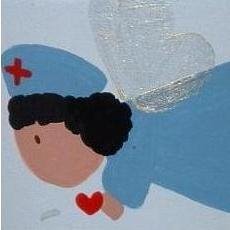Atopic Dermatitis: Scaling, Itching, Redness and Excoriation. Possible lichenification in chronic cases. Most common in young children around the elbow and knees. Adults are more common in neck and knees. May be associated with an allergic disorder, hay fever, or asthma.
Contact Dermatitis: Itchy, weepy reaction with a foreign substance (Poison Ivy) or lotions. Skin becomes red.
Diaper Rash: Inflammatory reaction in the region covered by a diaper. This may include chemical allergies, sweat, yeast, or friction irritation.
Ermatitis stasis: Decreased blood flow the lower legs resulting in a skin irritation, possible ulcer formation.
Onychomycosis: Fungal infection related to the fingernails or toenails. Often caused by Trichophyton rubrum.
Lichen planus: Treated with topical corticosteroids. The presence of pink or purple spots on the legs and arms. Lesions are itchy, flat and polygonal. May cause hair loss.
Pityriasis rosea: A mild to moderate rash that starts as a single pink patch and then numerous patches begin to appear on the skin. This may lead to itching. Found primarily in ages 10-35 years old.
Psoriasis: An autoimmune disease mediated by T lymphocytes that can lead to arthritis. Generally, treated with UV light, tar soap and topical steroid cream. A reddish rash that can be found in numerous locations.
Stevens-Johnson syndrome: An allergic reaction that can include rashes, and involve the inside of the mouth. May be due to drug sensitivity. Can lead to uveitis and keratitis. Other factors related to SJS include: pneumonia, fever, myalgia and hepatitis. SJS can be extremely similar to varicella zoster and pemphigus vulgaris conditions. There may also be the presence of herpes virus or Mycoplasma pneumoniae.
Bullous pemphigoid: Eruptions of the skin caused by the accumulation of antibodies in the basement membrane of the skin. Treated with cortisone creams or internally. Skin biopsy offers definitive diagnosis.
Acne vulgaris: Oil glands become inflamed, plugged or red. May be treated in moderate to severe cases with anti-inflammatory medications or creams.
Rosacea: A redness that covers the middle part of the face. Blood vessels in the face dilate. Most common in adults 30-50 years old. Unable to be cured, only treated. May cause long term skin damage is left untreated. Antibiotics are often prescribed.
Seborrheic keratosis: The development of skin “tags” or the barnacles of old age. Usually found in people over 30 years old. Appear to be tabs growing in groups or individually on your skin. Can be treated with Scrapping, Freezing or Electrosurgery.
Actinic keratosis: A site that can become cancerous, usually small and rough on the skin that has been exposed to the sun a lot. Usually treated with cryosurgery and photodynamic therapy.
Scabies: Caused by the human itch mite: Sarcaptes scabies, and identified by presence of raised, red bumps that are itchy. Closer identification with a visual aid will show streaks in the skin created by the mite.
Molluscum contagiosum: Considered a STD. Small downgrowths called molluscum bodies that include the presence of soft tumors in the skin caused by a virus. Contagious.
Herpes zoster: Infection caused by the varicella-zoster virus. Can cause chickenpox and then shingles in later years. The virus infects the dosal root ganglia of nerves and can cause intense itching.
St. Anthony’s Fire: Claviceps purpurea (fungus) can cause intense pain in the extremities by causing blood vessels to constrict. Fungus produces ergotamines.
Impetigo: A skin infection caused by Staph or Streptococcus that causes itchy, red skin and pustules. Treated with topical antibiotics and primarily affects children.
Acanthosis nigricans: The presence of dark velvety patches of skin around the armpit, back, neck and groin. Can occur with multiple diseases. Has been linked to patients with insulin dysfunction.
Hidradenitis suppurativa: The presence of numerous abscess in the groin and armpit region.
Melasma: “Mask of Pregnancy” Changes in the pigmentation of women that are pregnant. Occurs in 50% of all pregnancies.
Urticaria: Elevated itchy areas that are linked to allergic reactions. May be accompanied with edema and may blanch with touch. “Hives”
Vitiligo: Loss of melanocytes resulting in skin turning white. Hair in regions affected will also turn white. Primarily identified in ages 10-30. Several genetic factors involved. May be associated with other more severe autoimmune disorders.










0 comments:
Post a Comment